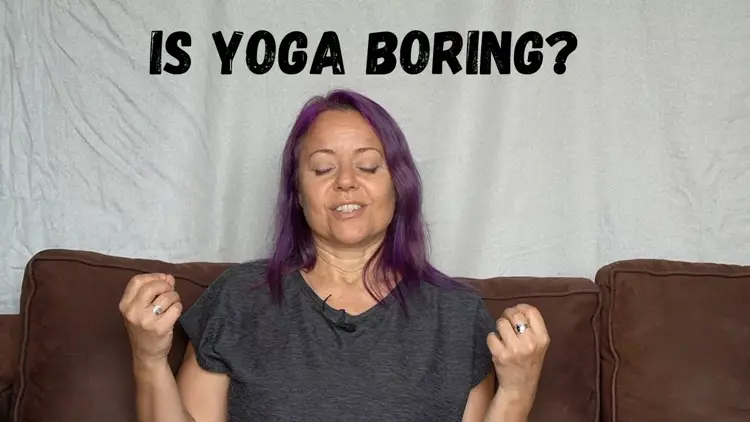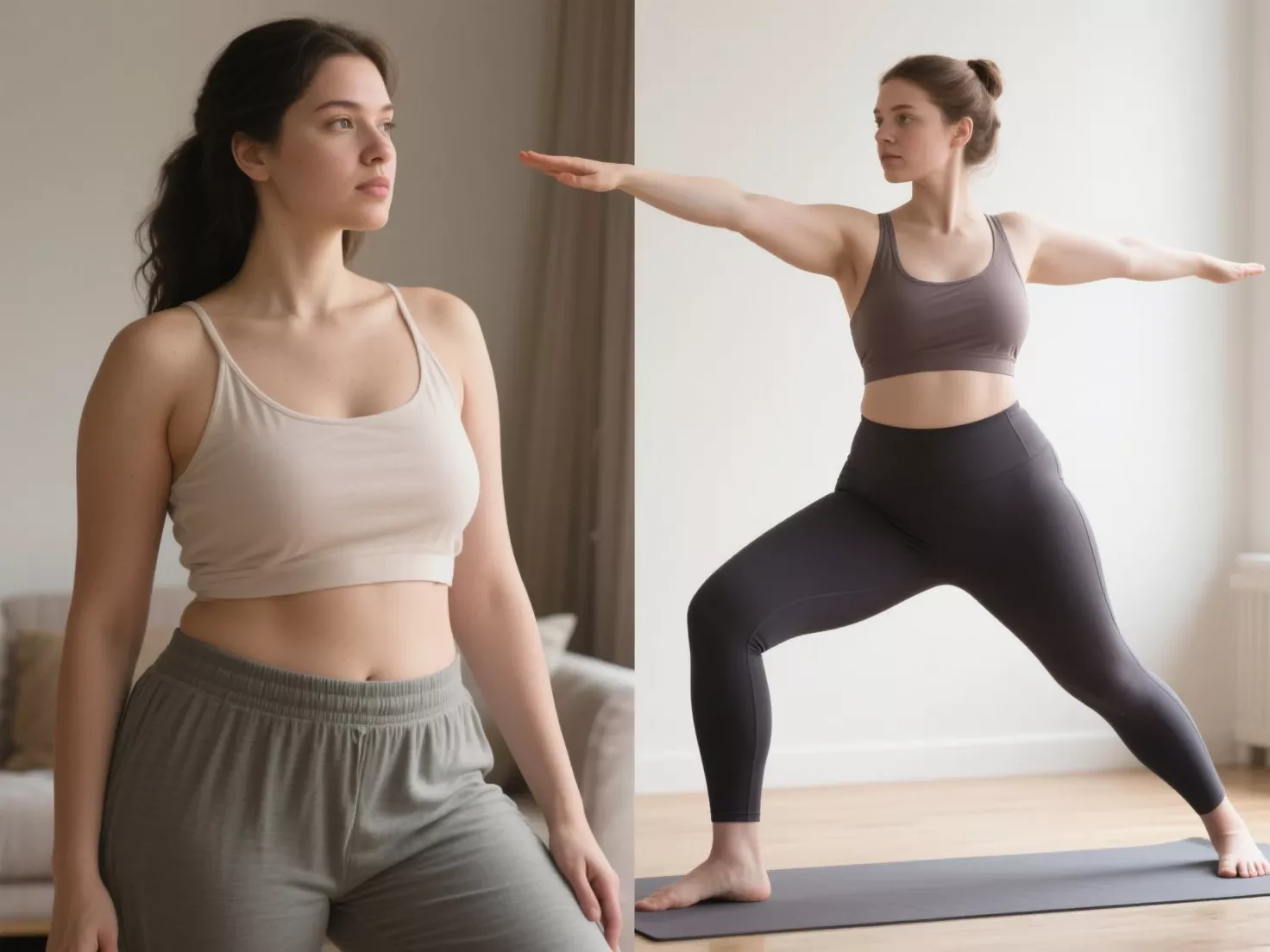Whether yoga feels boring or engaging depends on your personal perspective and how you approach the practice.
While some people find yoga to be deeply fulfilling and transformative, others may perceive it as monotonous if it doesn’t align with their interests or energy levels.
Understanding the variety within yoga and how it can be tailored to different preferences can make it an exciting and rewarding experience.

Here’s a deeper look at why some people may find yoga boring and how to make it more enjoyable.
Why Yoga Might Feel Boring
Yoga is a diverse practice that offers something for everyone, but it can sometimes feel boring if certain aspects don’t align with your expectations or preferences.
Understanding the reasons behind this feeling can help you adjust your approach and rediscover yoga’s potential.
Below are detailed insights into why yoga might feel boring and how to overcome these challenges:
1. Lack of Understanding About Yoga’s Purpose
Yoga is much more than physical exercise—it’s a holistic practice that integrates mind, body, and spirit.
If you’re approaching it solely as a workout, you might find it less stimulating compared to high-energy fitness routines.
Why It Feels Boring:
- Beginners may focus only on poses without understanding their deeper purpose, such as promoting mindfulness or stress relief.
- Without knowledge of yoga’s philosophy, breathwork, or meditative aspects, the practice might seem repetitive or overly slow.
How to Fix It:
- Learn about yoga’s benefits beyond the physical, such as improving focus, reducing stress, and fostering emotional well-being.
- Take a class or read about the principles of yoga (e.g., the Eight Limbs of Yoga) to deepen your understanding and appreciation.
2. Choosing the Wrong Style of Yoga
Yoga comes in various styles, from fast-paced and physically demanding to gentle and meditative.
Selecting a style that doesn’t align with your energy levels or goals can make the practice feel tedious.
Why It Feels Boring:
- A slow-paced class like Yin Yoga might feel unengaging if you’re craving movement and intensity.
- A structured and disciplined style like Ashtanga might seem monotonous to someone who enjoys variety and creativity.
How to Fix It:
- Experiment with different styles to find one that suits your personality and preferences:
- Try Vinyasa Yoga for dynamic, flowing sequences.
- Explore Power Yoga for a fitness-focused approach.
- Opt for Restorative Yoga or Yoga Nidra if you’re seeking relaxation.
3. Impatience with Stillness
In today’s fast-paced world, slowing down can feel uncomfortable, making yoga’s emphasis on mindfulness and intentional movement seem boring.
Why It Feels Boring:
- Poses held for longer periods, as in Yin Yoga or Restorative Yoga, may feel tedious for those used to constant stimulation.
- Quiet practices like meditation or breathwork can be challenging if you’re not accustomed to sitting still.
How to Fix It:
- Start with more dynamic styles like Hatha or Vinyasa Yoga that include movement and variety.
- Gradually incorporate mindfulness practices into your routine, starting with short meditation sessions or simple breathing exercises.
4. Repetition of Sequences
Many yoga classes include structured sequences, like Sun Salutations, which are repeated frequently.
While this repetition is intended to create a meditative flow, it can feel monotonous if you prefer variety in your workouts.
Why It Feels Boring:
- Performing the same poses repeatedly might seem unchallenging or predictable.
- Familiar sequences may lose their appeal over time if you’re not setting new goals or exploring advanced variations.
How to Fix It:
- Mix up your practice by trying new poses or exploring themed classes, such as yoga for core strength or balance.
- Challenge yourself by focusing on improving alignment or mastering advanced variations of familiar poses.
5. Lack of Personal Connection
If yoga feels like a chore rather than a personal journey, it’s easy to lose interest.
Why It Feels Boring:
- You might not feel connected to the practice if it doesn’t align with your goals or values.
- Practicing in an environment that feels impersonal or uninspiring (e.g., a crowded class or a noisy space) can diminish enjoyment.
How to Fix It:
- Reflect on your reasons for practicing yoga and set intentions for your sessions, such as improving flexibility, reducing stress, or cultivating mindfulness.
- Create a dedicated space for practice, adding elements like calming music, candles, or essential oils to make it more enjoyable.
6. Not Feeling Challenged
For those seeking a physical workout, yoga might feel too easy or unchallenging, especially if you’re sticking to beginner-level poses.
Why It Feels Boring:
- Poses that don’t require much effort may leave you feeling disengaged.
- A lack of progression in your practice can make it seem stagnant.
How to Fix It:
- Incorporate more challenging poses, such as arm balances or inversions, as your strength and flexibility improve.
- Focus on refining your alignment or exploring advanced variations of basic poses.
- Try faster-paced styles like Power Yoga or Ashtanga Yoga to push your physical limits.
7. Practicing Without Variety or Creativity
Repeating the same routines or practicing without exploring new aspects of yoga can lead to boredom over time.
Why It Feels Boring:
- A lack of novelty can make sessions feel repetitive and uninspiring.
- Focusing only on physical poses while ignoring breathwork, meditation, or yoga philosophy can limit your experience.
How to Fix It:
- Add variety by exploring different styles, teachers, or yoga props like blocks and straps.
- Dive into the meditative or philosophical aspects of yoga, such as learning about chakras or practicing mantra meditation.
Feeling bored with yoga is often a sign that you haven’t yet found the right style, teacher, or approach for your unique needs.
By understanding why yoga feels boring and taking steps to tailor your practice, you can transform it into a rewarding and enjoyable experience.
Whether it’s experimenting with new styles, setting personal goals, or exploring the deeper aspects of yoga, there’s always a way to reignite your passion for the practice.
How to Make Yoga More Exciting
1. Explore Different Yoga Styles
Yoga isn’t a one-size-fits-all practice. Trying various styles can help you find one that resonates with your energy and goals.
Dynamic Yoga Styles:
- Vinyasa Yoga: Offers a fast-paced, flowing sequence of poses synchronized with breath, ideal for those who enjoy movement and creativity.
- Ashtanga Yoga: A structured, physically challenging practice for people who enjoy discipline and routine.
Gentle Yoga Styles:
- Yin Yoga: Focuses on long-held, deep stretches, perfect for relaxation and introspection.
- Hatha Yoga: A balanced approach with slower, more deliberate movements.
Spiritual or Meditative Styles:
- Kundalini Yoga: Combines breathwork, chanting, and poses for a spiritual and energizing experience.
- Restorative Yoga: Involves passive stretching and supported poses to promote deep relaxation.
2. Set Intentions for Each Practice
Practicing yoga with a purpose can make it feel more engaging and meaningful.
Examples of Intentions:
- Improving flexibility or strength.
- Reducing stress or anxiety.
- Cultivating mindfulness and self-awareness.
By focusing on your intention, yoga becomes a journey rather than just a workout.
3. Add Variety to Your Practice
Mixing up your routine prevents monotony and keeps you motivated.
- Try practicing outdoors to connect with nature.
- Incorporate props like blocks or straps to explore new poses.
- Experiment with yoga playlists or calming music to set the mood.
4. Join Group Classes or Try Online Sessions
Practicing with others can make yoga more interactive and enjoyable.
Group Classes:
- Build a sense of community and motivation by practicing alongside others.
- Gain inspiration from experienced instructors and fellow yogis.
Online Yoga Platforms:
- Access a variety of styles and teachers from the comfort of your home.
- Explore themed classes (e.g., yoga for stress relief or strength-building) to suit your mood.
5. Focus on the Benefits
Sometimes, yoga’s subtler rewards aren’t immediately apparent. Paying attention to the positive effects can make the practice feel more worthwhile.
- Physical Benefits: Increased flexibility, strength, and posture improvement.
- Mental Benefits: Stress reduction, improved focus, and emotional balance.
- Emotional Benefits: A sense of calm, clarity, and connection to yourself.
6. Make It Personal
Personalizing your yoga practice ensures it aligns with your preferences and lifestyle.
- Adjust the length of your sessions—start with 10-15 minutes if longer classes feel overwhelming.
- Choose poses that challenge or relax you, depending on your energy level.
- Combine yoga with other activities you love, such as journaling or meditation.
Reframing Your Perspective on Yoga
Yoga is not just about physical poses—it’s a holistic practice that integrates body, mind, and spirit.
If you approach yoga with curiosity and an open mind, it can become an enriching and dynamic experience.
- Instead of focusing on what yoga isn’t (e.g., a high-intensity cardio workout), consider what it offers: mindfulness, resilience, and a deeper connection to yourself.
- Remember, yoga is a journey. What may feel boring at first could later become a source of joy and growth.
Conclusion
While yoga may seem boring to some, it offers endless opportunities for exploration and transformation.
By trying different styles, setting meaningful intentions, and tailoring your practice to suit your needs, you can make yoga a fulfilling and enjoyable part of your life.
Remember, the beauty of yoga lies in its flexibility—it can be as dynamic or meditative as you make it.



